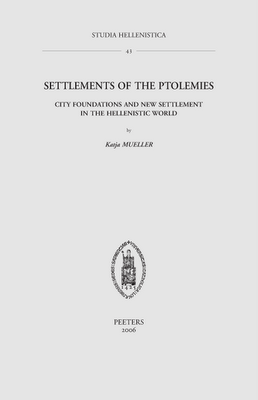REVIEW of Katja Mueller, Settlements of the Ptolemies
Katja Mueller, Settlements of the Ptolemies. City Foundations and New Settlement in the Hellenistic World. Studia Hellenistica 43. Leuven: Peeters, 2006. Pp. 249. ISBN 978-90-429-170-5. €59.00 (pb).
Reviewed by Sara Saba, The Australian National University (Sara.Saba@anu.edu.au)
Word count: 1474 words
Katja Mueller's monograph is a most welcome and dense work that approaches the topic of Ptolemaic strategy for implanting and fostering settlements through the analysis of papyrological, epigraphical, and archeological material derived from all the regions that had been under Ptolemaic rule. This, however, is often filtered and interpreted through a methodology borrowed from Geographical Studies, with which the expected audience may not be familiar. The book is certainly very informative, informed, and interesting, but it claims the undivided attention of the reader at all times.
More at BMCR
Reviewed by Sara Saba, The Australian National University (Sara.Saba@anu.edu.au)
Word count: 1474 words
Katja Mueller's monograph is a most welcome and dense work that approaches the topic of Ptolemaic strategy for implanting and fostering settlements through the analysis of papyrological, epigraphical, and archeological material derived from all the regions that had been under Ptolemaic rule. This, however, is often filtered and interpreted through a methodology borrowed from Geographical Studies, with which the expected audience may not be familiar. The book is certainly very informative, informed, and interesting, but it claims the undivided attention of the reader at all times.
More at BMCR
Labels: Mueller, Settlements Ptolemaic Egypt

